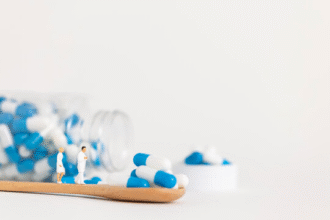What Is Migraine?
Migraine is more than a headache—it’s a neurological condition affecting about 12% of people worldwide, striking women two to three times more often than men. Beyond intense head pain, migraines can include nausea, vomiting, sensitivity to light (photophobia), sound (phonophobia), and even temporary sensory disturbances called auras.
Types of Migraine
- Migraine without aura (common migraine): Most frequent form; pulsatile head pain with nausea and sensitivities but no sensory warning signs.
- Migraine with aura (classic migraine): Includes reversible visual or sensory symptoms (flashing lights, blind spots, tingling) that precede or accompany the headache.
- Chronic migraine: Headaches on 15 or more days per month for more than three months, of which at least eight days meet migraine criteria.
Who Gets Migraines?
- Prevalence: Affects about 1 in 8 people globally.
- Gender: Women 2–3 times more likely than men, often influenced by hormones.
- Age: Begins in adolescence or early adulthood but can start at any age.
- Family history: Up to 70% have at least one relative with migraines.
The Four Phases of a Migraine Attack
- Prodrome (hours to days before): Mood changes, food cravings, neck stiffness, increased urination.
- Aura (5–60 minutes): Visual disturbances (zig-zag lines, blind spots), sensory changes (pins and needles).
- Headache (4–72 hours): Throbbing pain, often on one side; nausea, vomiting, and light/sound sensitivity.
- Postdrome (after headache): Feeling drained or euphoric, difficulty concentrating.
The Science Made Simple
- Trigeminovascular pathway: Activation of nerve fibers around blood vessels in the meninges releases neuropeptides (e.g., CGRP), causing inflammation and pain signaling.
- Chemical messengers: Fluctuations in serotonin and CGRP contribute to vessel dilation and pain.
Common Triggers
Keeping a headache diary helps identify personal triggers, which often include:
- Hormonal shifts: menstrual cycle, pregnancy, menopause.
- Sleep changes: too little or too much sleep.
- Dietary triggers: aged cheeses, red wine, chocolate, caffeine, MSG.
- Stress and emotion: anxiety, excitement.
- Sensory stimuli: bright lights, loud noises.
- Weather changes: barometric pressure drops, high humidity.
Recognizing the Symptoms
- Pulsating or throbbing pain, often unilateral.
- Nausea and vomiting.
- Sensitivity to light, sound, and smells.
- Aura symptoms in some attacks: visual or sensory disturbances.
When to See a Doctor
- Headaches impair daily life or occur more than twice a week.
- You experience an aura or warning signs.
- Pain persists despite over-the-counter treatments.
- Sudden “worst headache” in your life or new neurologic symptoms (weakness, confusion).
Diagnosis: IHS Criteria
Doctors use guidelines from the International Headache Society, which consider attack duration, pain characteristics, and associated features to diagnose migraine and rule out other causes.
Treatment Options
Acute (Rescue) Treatments
- Over-the-counter pain relievers: NSAIDs (e.g., ibuprofen), acetaminophen.
- Prescription triptans: sumatriptan, rizatriptan target migraine pathways.
- Anti-nausea agents: metoclopramide, prochlorperazine.
Preventive (Prophylactic) Therapies
- Medications: beta-blockers (propranolol), anticonvulsants (topiramate), antidepressants (amitriptyline).
- CGRP inhibitors: monthly injections of erenumab, fremanezumab.
- Botox injections: for chronic migraine.
Complementary and Lifestyle Strategies
- Hydration and diet: eat balanced meals; stay well-hydrated.
- Sleep hygiene: consistent sleep schedule; dark, quiet bedroom.
- Stress management: meditation, yoga, deep-breathing exercises.
- Regular exercise: low-impact activities like walking and swimming.
- Dietary supplements: magnesium, riboflavin (vitamin B2), coenzyme Q10 may help prevent attacks.
- Acupuncture and massage: can provide symptomatic relief for some.
Digital Tools and Apps
- Headache diaries: Migraine Buddy, Cara, and MyMigraineTeam track attacks and triggers.
- Weather and barometric apps: forecast pressure changes that might trigger migraines.
- Relaxation apps: Calm and Headspace for guided meditation.
Managing Migraine in Daily Life
- Plan ahead: carry medications, sunglasses, and a water bottle.
- Create a low-stimulus environment: dim lights, minimize noise.
- Communicate needs: inform family, friends, and employers about your triggers and accommodations (e.g., rest breaks, dark rooms).
When to Seek Emergency Help
- Sudden severe headache (“thunderclap headache”).
- Headache with fever, stiff neck, or altered consciousness.
- Neurologic deficits: weakness, slurred speech, or vision loss.
resources
- American Migraine Foundation: https://americanmigrainefoundation.org
- Migraine Trust: https://www.migrainetrust.org
- National Headache Foundation: https://headaches.org
Takeaway
Migraines are highly individual—what works for one person may not work for another. By understanding your triggers, phases, and treatment options, you can minimize attack frequency and impact. Stay proactive, keep a diary, and partner with your healthcare team to find the best strategy for you.
Pathogenesis of migraine
The pathogenesis of migraine is not yet fully understood, but studies have shown that it is related to abnormal neuronal excitability in the central nervous system. (1) Abnormal neuronal excitability may be related to the following factors. (1) Vascular dysregulation: During a migraine attack, the blood vessels in the brain suddenly dilate and then suddenly contract. This sudden vasomotor dysregulation may cause abnormal neuronal activity. (2) Neurotransmitter imbalance: Communication between neurons depends on neurotransmitters, including angiotensin, 5-hydroxytryptamine, norepinephrine, GABA, etc. When these neurotransmitters are out of balance, abnormal neuronal excitability may be caused. (3) Genetic factors: Some studies have shown that migraine may be caused by the interaction of multiple genes. (4) Environmental factors: Some environmental factors, such as diet, climate, sleep, stress, etc., may affect the onset of migraine. (5) Abnormal neuronal network: Studies have found that during a migraine attack, the neuronal network in the brain undergoes abnormal activity, which may be related to the onset of migraine.







